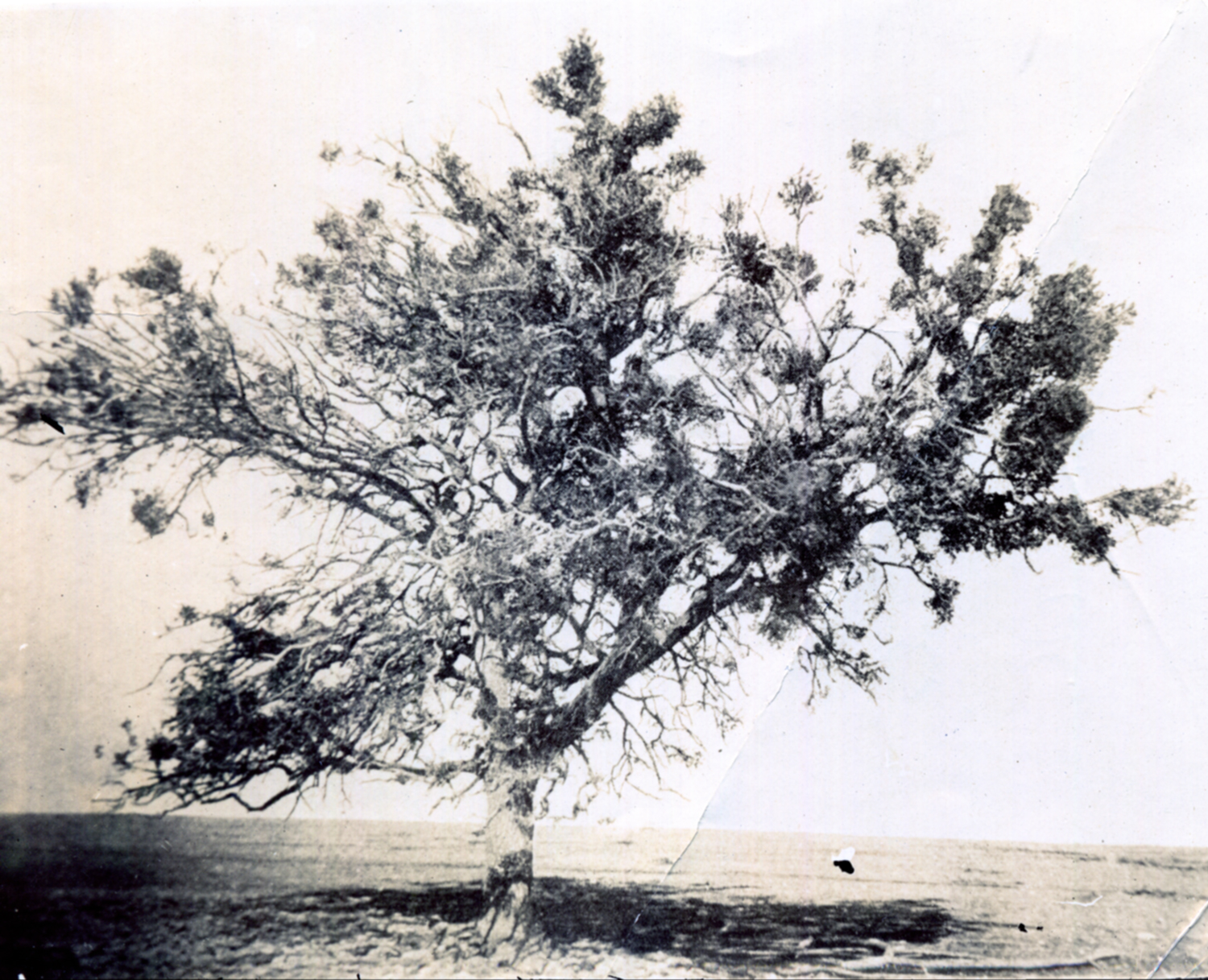MISTLETOE.
A parasitic plant used in Christmas decorations, mistletoe (Phoradendron serotinum) is Oklahoma's official floral emblem. The territorial legislature so designated the plant on February 11, 1893, in House Bill 49. Introduced by Rep. J. A. Wimberly. The bill was the first to establish an official floral emblem by any legislature.
The mistletoe bill was controversial. Mrs. O. Beeson (or Beason) of El Reno lobbied for it while the territorial government considered floral exhibits for the World's Columbian Exposition (1893 Chicago World's Fair). Others wanted the passion flowers. Beeson persuaded Wimberly, twenty-seven, a Tennessean and Eighty-niner who represented Kingfisher and Canadian counties, to carry the bill.
After 1907 statehood, Sen. John Golobie filed a bill to retain mistletoe as the official floral emblem. Golobie, bachelor editor and publisher of Guthrie's Oklahoma State Register and a native of Yugoslavia, likely had been present as a journalist representing Guthrie's Oklahoma State Capital when the original mistletoe bill passed the 1893 Territorial Assembly. Golobie, also an Eighty-niner, passionately orated on the subject, recalling that mistletoe was the only greenery available to decorate graves during the hard winter of 1889. In 1910 his bill became law.
Controversy arose again in the 1980s. In January 1986 Rep. Kelly Haney of Seminole wrote legislation naming the Indian blanket as the state's official wildflower. House Bill 1649 passed the legislature in February. The new symbol was honored at a ceremony held in the Capitol and attended by representatives of more than twenty Indian tribes. Officials noted, with some apology, that the long-ridiculed yet revered mistletoe remained the state's official "floral emblem."
See Also
Learn More
H. I. Featherly, Oklahoma's State Tree and State Floral Emblem (Stillwater: Oklahoma A&M College, School of Arts and Sciences, Department of Botany, ca. 1942–45).
Carolyn Thomas Foreman, Oklahoma Imprints 1835–1907: A History of Printing in Oklahoma Before Statehood (Norman: University of Oklahoma Press, 1936).
Journal of the House Proceedings of the Second Legislative Assembly of the Territory of Oklahoma (Guthrie, Okla.: State Capital Printing Co., 1893).
Blanche E. Little, Mistletoe (Ethereal Plant): Oklahoma's State Flower (Cedar Rapids, Iowa: The Torch Press, 1927).
"Oklahoma Symbols, Emblems, Songs, Animals, Constitution," Vertical File, Legislative Reference Division, Oklahoma Department of Libraries, Oklahoma City.
Citation
The following (as per The Chicago Manual of Style, 17th edition) is the preferred citation for articles:
Richard Mize, “Mistletoe,” The Encyclopedia of Oklahoma History and Culture, https://www.okhistory.org/publications/enc/entry?entry=MI047.
Published January 15, 2010
© Oklahoma Historical Society


